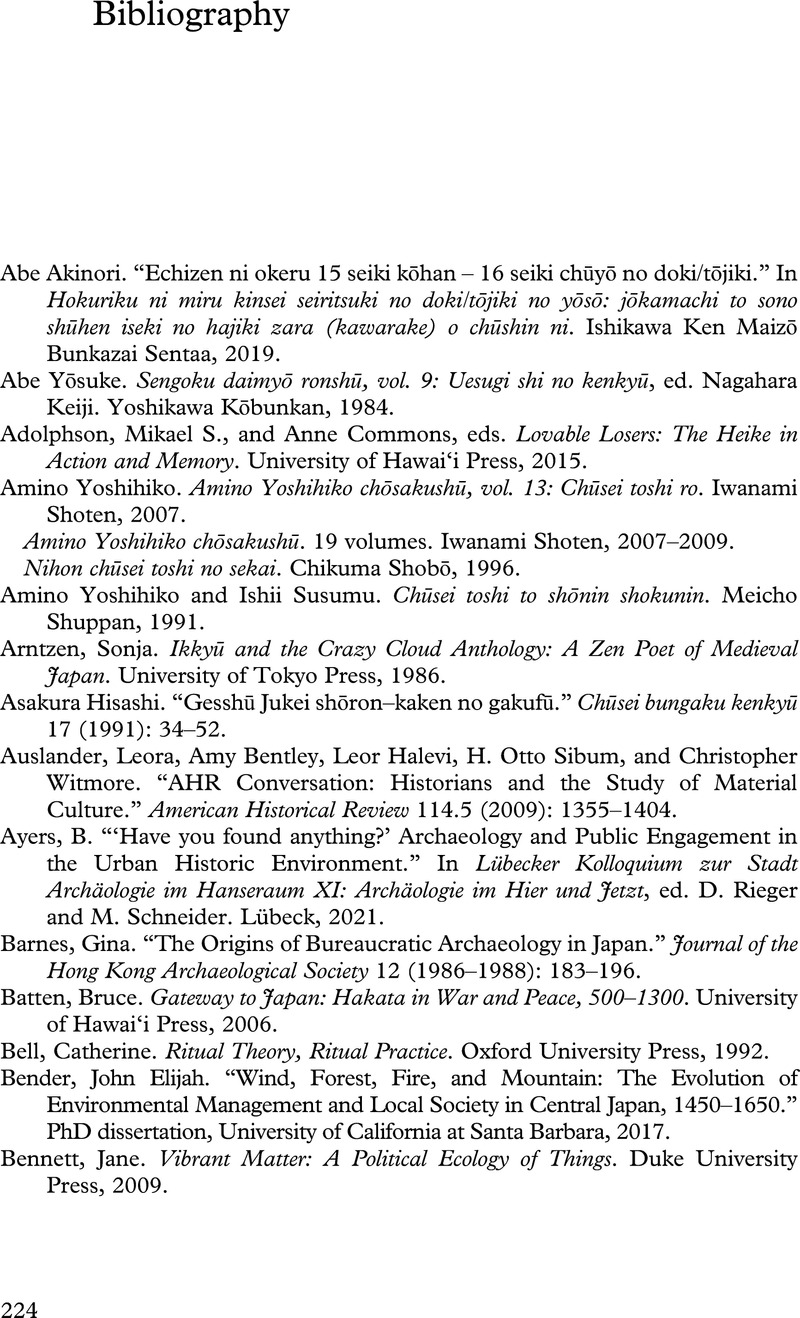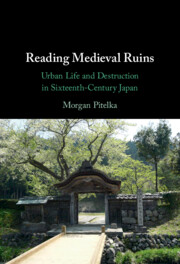Book contents
- Reading Medieval Ruins
- Reading Medieval Ruins
- Copyright page
- Contents
- Figures
- Maps
- Tables
- Acknowledgments
- Note on the Text
- Prologue
- 1 A Provincial Palace City as an Urban Space
- 2 The Material Culture of Urban Life
- 3 Late Medieval Warlords and the Agglomeration of Power
- 4 The Material Foundations of Faith
- 5 Culture and Sociability in the Provinces
- 6 Urban Destruction in Late Medieval Japan
- Epilogue
- Bibliography
- Index
- References
Bibliography
Published online by Cambridge University Press: 31 March 2022
- Reading Medieval Ruins
- Reading Medieval Ruins
- Copyright page
- Contents
- Figures
- Maps
- Tables
- Acknowledgments
- Note on the Text
- Prologue
- 1 A Provincial Palace City as an Urban Space
- 2 The Material Culture of Urban Life
- 3 Late Medieval Warlords and the Agglomeration of Power
- 4 The Material Foundations of Faith
- 5 Culture and Sociability in the Provinces
- 6 Urban Destruction in Late Medieval Japan
- Epilogue
- Bibliography
- Index
- References
Summary

- Type
- Chapter
- Information
- Reading Medieval RuinsUrban Life and Destruction in Sixteenth-Century Japan, pp. 224 - 236Publisher: Cambridge University PressPrint publication year: 2022



